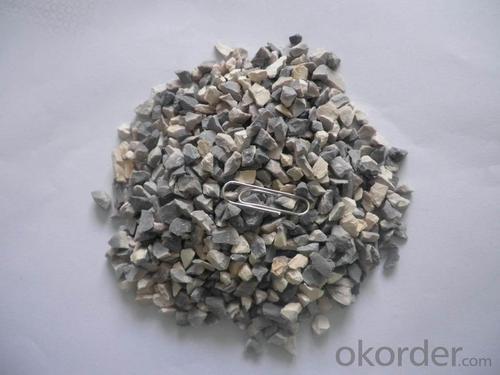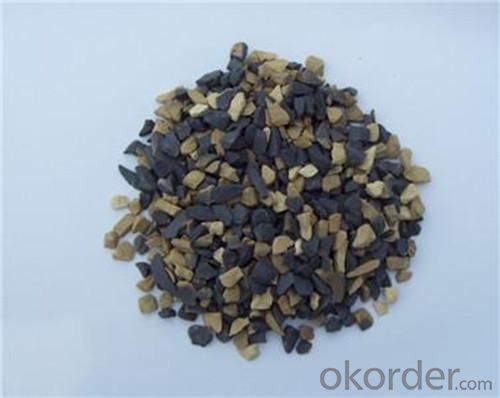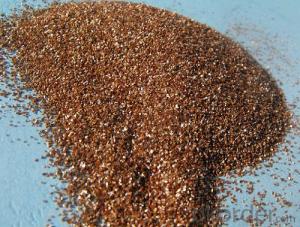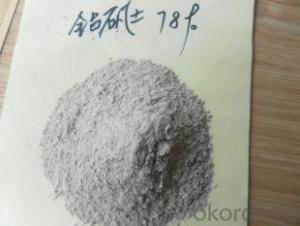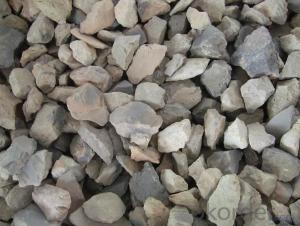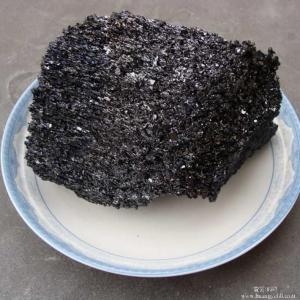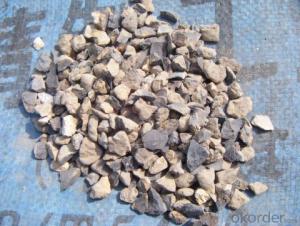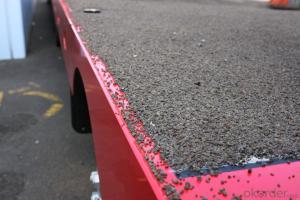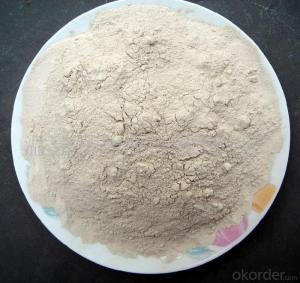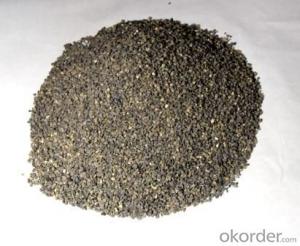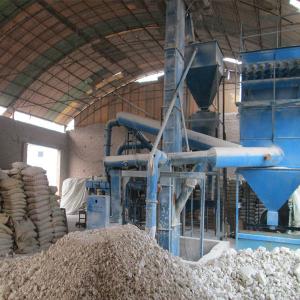Calcined Bauxite - Raw Materials for Refractory
- Loading Port:
- China Main Port
- Payment Terms:
- TT or LC
- Min Order Qty:
- 100MT m.t.
- Supply Capability:
- 20000MT/YEAR m.t./month
OKorder Service Pledge
OKorder Financial Service
You Might Also Like
Quick Details of Calcined Bauxite:
Bauxite is a naturally occurring, heterogeneous material composed primarily of one or more aluminum hydroxide minerals, plus various mixtures of silica, iron oxide, titania, aluminosilicate, and other impurities in minor or trace amounts.
Specification of Calcined Bauxite:
|
|
AL2O3 |
FE2O3 |
TIO2 |
K2O+Na2O |
CaO+MgO |
Bulk density |
|
1 |
≥75 |
≤2.5 |
≤4.0 |
≤0.3 |
≤0.5 |
≥2.7 |
|
2 |
≥80 |
≤2.5 |
≤4.0 |
≤0.3 |
≤0.5 |
≥2.8 |
|
3 |
≥85 |
≤2 |
≤4.0 |
≤0.3 |
≤0.5 |
≥3.0 |
|
4 |
≥86 |
≤2 |
≤4.0 |
≤0.3 |
≤0.5 |
≥3.1 |
|
5 |
≥87 |
≤2 |
≤4.0 |
≤0.3 |
≤0.5 |
≥3.2 |
|
6 |
≥88 |
≤1.8 |
≤4.0 |
≤0.25 |
≤0.5 |
≥3.25 |
|
7 |
≥90 |
≤1.8 |
≤4.0 |
≤0.25 |
≤0.5 |
≥3.3 |
Application of Calcined Bauxite:
Aluminium is a product of increasing importance for manufacturing because of its light weight, strength and durability as well as its capacity to be recycled. On a life cycle assessment basis, the high strength to weight ratio of aluminium results in significant fuel savings, particularly where substitution can be made for heavier construction materials.
Advantages:
1.We can control the quality and cost due to our strong capacity and cash flow in China .
2. We have strict and mature quality and logistics control on the cargo .
3.As a governmental company, we are reliable.
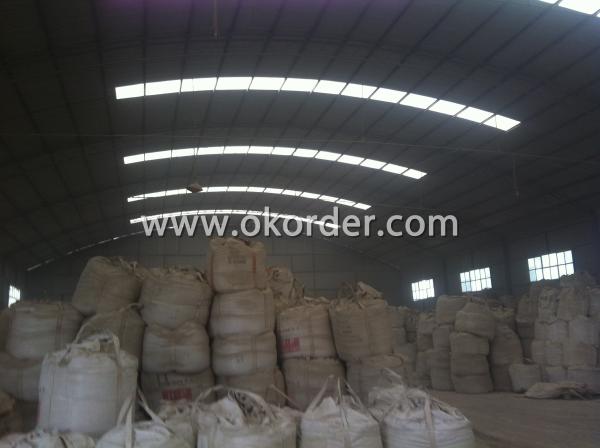
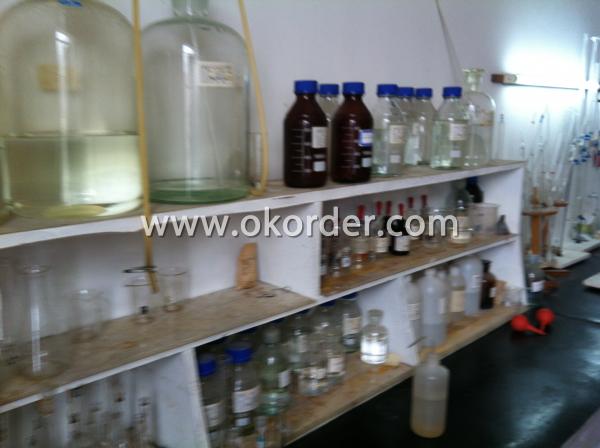
- Q: Who knows about roof fireproofing materials?
- Roof thermal insulation materials are various which generally can be divided into two categories, namely inorganic and organic materials: Inorganic materials are expanded perlite, aerated concrete, rock wool, glass wool, etc. Organic materials are styrofoam, polyurethane?foaming?plastic and so on. A. common roof thermal insulation materials 1. the expanding polystyrene board (EPS) has good thermal insulation performance, and cheap price but poor intensity with heat conductivity coefficient of 0.038-0.041. 2. extruded polystyrene board (XPS) has better thermal insulation performance and high intensity but an expensive price with heat conductivity coefficient of 0.028-0.03. It is moisture resistant but needs treatments on surface in construction. 3. rock wool board, with heat conductivity coefficient of 0.041-0.045, is fireproofing, fire?retardant. It has a good hygroscopicity performance but is poor in thermal insulation. 4. gelatine powder polyphenyl granule heat insulating slurry, with heat conductivity coefficient of 0.057- 0.06, has a good flame resistance performance, but the results of recycling and thermal insulation are unsatisfactory. It has high construction requirements. 5. polyurethane foaming material, with heat conductivity coefficient of 0.025-0.028, has good waterproofness and thermal insulation performance, as well as high intensity, but it is expensive. 6. perlite and other slurry, with heat conductivity coefficient of 0.07-0.09, have good flameproofness and water-absorbing ability but are poor in thermal insulation and thermostability.
- Q: Are fire materials poisonous after burning?
- High temperature oxide materials in refractory special applications, such as aluminum oxide, lanthanum oxide, beryllium oxide, calcium oxide, zirconium oxide, refractory compounds, such as carbides, nitrides, borides, silicides and sulfides; high temperature composite materials, including metal ceramics, high temperature inorganic coatings and fiber reinforced ceramics.
- Q: Can anyone tell me the requirements of the refractory masonry??
- Refractory materials actually have two functions. The first one is to improve the refractoriness and the second one is to improve the body plasticity of refractory materials.The higher the aluminum content is, the better refractory it will be. Of course, the content of aluminum in refractory materials can not be impoved only by using kaolin. Such raw materials that contain more aluminum as bauxite chamotte should be used as framework.So the content of aluminum in kaolin does not need to be too high and more than 38% of aluminum is enough. However, the viscosity should be taken into account. It will be better if the viscosity is better as the extra bentonite do not need to be added.The refractoriness that is is above 1400 degree is enough.
- Q: How to use fireclay?
- Mix refractory cement (ie aluminate cement CA50) with some refractory aggregate (bauxite, slag from flint clay) and powder (ie, crushed aggregate). Add some water to the mixture and stir, and it can be used. The clinker can be refractory powder.
- Q: How to divide the fire rating standards of insulation materials?
- 1. According to the GB8624-97 national standard, building materials can be divided into following levels in terms of combustion performance. A-level: Non-combustible building materials: Materials almost don't burn. B1-level: Fire-retardant building materials: Fire-retardant materials are good at resisting flame. It is difficult for them to burst into fire when coming across open fire in the air or at high temperature. It will not quickly get wilder and when the fire source removes, it will be extinguished immediately. B2-level: Combustible building materials: Combustible building materials can play a certain role in preventing combustion. It will immediately burst into flames when coming across open fire or at high temperature, and will lead to fire spreading, such as wooden pillars, roof frames and beams as well as stairs. B3-level: Inflammable building materials: Inflammable building materials are highly flammable with no flame retardant ability. The fire risk is high. 2.The exterior wall thermal insulation materials can be classified according to fire rating. 1. Insulation materials with A-level combustion performance: rock wool, glass wool, foam glass, ceramic foam, foam cement, close-celled perlite, etc. 2. The insulation materials with B1-level combustion performance: specially-treated extruded polystyrene boards(XPS)/ specially-treated Polyurethane(PU), Phenolics, Polystyrene rubber powdery particles,etc. 3. Insulation materials with B2-level combustion performance: Expanded polystyrene sheets(EPS), Extruded polystyrene board(XPS), Polyurethane(PU), Polyethylene(PE), etc.
- Q: Who knows what kind of material the fire-proof plate use, and is it good?
- It is the decorative board made by adopting silicious material or calcareous material as the main raw material, and blending them with certain proportion of fibrous material, lightweight?aggregate, adhesive and chemical?additive before steam pressing. It is a kind of new material and more and more frequently used currently not only for it is fireproof. Construction of the fire-proof plate has higher requirements on the adhesive, and the price of the fire-proof plate with better quality is more expensive than that of the decoration panel. The thickness of the fire-proof plate is generally 0.8mm, 1mm, and 1.2mm. So it is the best material for making cupboards.
- Q: What are the construction measures of refractory material in winter? Please descriptive briefly.
- Binding agent should be attaced great importance to when construction is conducted in winter. Generally if the bingding agent is water or cement, antifreezing measures should be taken.
- Q: What are the chemical composition of refractory cement?
- Calcium aluminate prepared by calcining as the main component. Aluminate cement takes bauxite and limestone as raw materials, alumina content of about 50% as the clinker. And it is a hydraulic cementing material made by grinding. Refractory cement is also known as aluminate cement.
- Q: What 's the highest temperature can magnesium plate glass resist ?
- You only need a fire-resisitance board thicker than 10 mm, remember to add more perlite as filler during production, 12 mm board is 80 yuan. . . .
- Q: Is it necessary for the frame of glass fireproof door to be crammed with fire-proof material?
- Fire resistance steel door——means that use a cold rolled steel sheet as door frame, door plank and framework, and stuff a door leaf with incombustible material.
1. Manufacturer Overview
| Location | Tianjin,China |
| Year Established | 2006 |
| Annual Output Value | Below US$1 Million |
| Main Markets | Mid East;Western Europe;Japan;North America |
| Company Certifications | The Authentication certificate of Quality Management system |
2. Manufacturer Certificates
| a) Certification Name | |
| Range | |
| Reference | |
| Validity Period |
3. Manufacturer Capability
| a) Trade Capacity | |
| Nearest Port | Tianjin |
| Export Percentage | 61% - 70% |
| No.of Employees in Trade Department | 50 People |
| Language Spoken: | English;Chinese |
| b) Factory Information | |
| Factory Size: | Above 300,00 square meters |
| No. of Production Lines | Above 5 |
| Contract Manufacturing | Design Service Offered |
| Product Price Range | Average |
Send your message to us
Calcined Bauxite - Raw Materials for Refractory
- Loading Port:
- China Main Port
- Payment Terms:
- TT or LC
- Min Order Qty:
- 100MT m.t.
- Supply Capability:
- 20000MT/YEAR m.t./month
OKorder Service Pledge
OKorder Financial Service
Similar products
Hot products
Hot Searches
Related keywords



